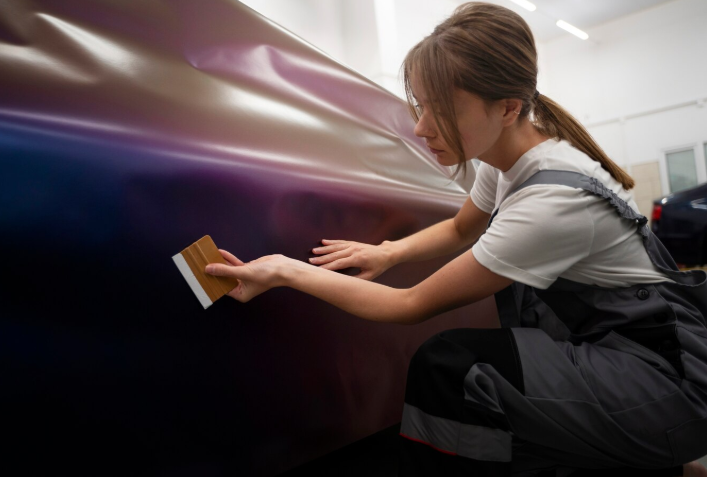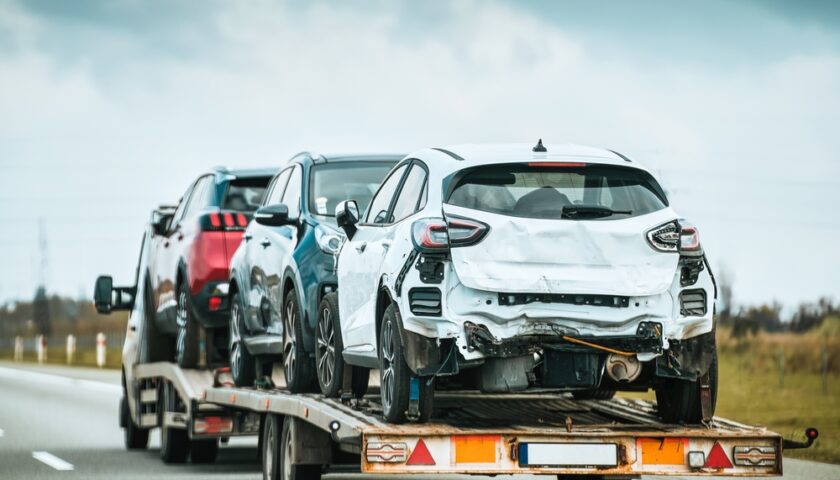Car owners are always on the lookout for effective ways to maintain their vehicle’s pristine look and protect it from everyday wear and tear. One popular solution is Car Ceramic Coating, a revolutionary technology that offers unmatched protection and shine. But what exactly is ceramic coating, and how does it work? In this blog, we’ll delve into the science behind ceramic coatings and their benefits, including how they compare to other protective solutions like PPF Car Protection.
What Is Car Ceramic Coating?
Ceramic coating, often referred to as nano-ceramic coating, is a liquid polymer applied to a car’s exterior. This coating bonds chemically with the factory paint, creating a protective layer that is both durable and long-lasting. Unlike traditional waxes or sealants, ceramic coating doesn’t wash away or break down over time, making it a popular choice among car enthusiasts.
The Science of Ceramic Coating
The magic of ceramic coating lies in its chemical composition. Most ceramic coatings are made from silicon dioxide (SiO2), a compound derived from quartz or sand. When applied to a car’s surface, the SiO2 molecules form a nano-scale hydrophobic layer. This layer repels water, dirt, and other contaminants, effectively keeping the car cleaner for longer.
The coating also creates a semi-permanent bond with the car’s paint. This bond is what gives ceramic coating its durability, resisting scratches, UV rays, and chemical stains. In some cases, additional components like titanium dioxide (TiO2) are added to enhance the coating’s reflective properties, giving the car a glossy finish.
Benefits of Car Ceramic Coating
1. Superior Protection Against Contaminants
The hydrophobic nature of ceramic coating ensures that water beads off the surface, carrying dirt and grime with it. This minimizes the risk of contaminants embedding into the paint, reducing the likelihood of stains and discoloration.
2. Enhanced Durability
Unlike traditional wax or sealant, ceramic coating forms a hard, protective shell around the car’s paint. This shell can withstand harsh weather conditions, road debris, and minor scratches, keeping the vehicle’s exterior looking new for years.
3. UV and Oxidation Resistance
Over time, exposure to sunlight can cause a car’s paint to fade or oxidize. Ceramic coating acts as a barrier against harmful UV rays, preserving the paint’s vibrant color and finish.
4. Improved Aesthetic Appeal
Ceramic coating enhances the car’s gloss, giving it a sleek and polished appearance. The reflective properties of the coating create a mirror-like finish that highlights the vehicle’s design.
5. Cost-Effective Maintenance
While the initial application of ceramic coating may seem expensive, its long-lasting nature reduces the need for frequent waxing or repainting. Over time, this can save car owners significant money on maintenance.
How Does Ceramic Coating Compare to PPF Car Protection?
Both Car Ceramic Coating and PPF Car Protection offer exceptional benefits, but they serve different purposes. Here’s a comparison to help you decide which option is best for your vehicle:
1. Composition and Application
- Ceramic Coating: Made of liquid polymers, ceramic coating is applied directly to the car’s paint and chemically bonds to it. It provides a hard, protective layer that enhances gloss and repels contaminants.
- PPF (Paint Protection Film): PPF is a transparent, urethane-based film applied to the car’s surface. It provides a thicker, more flexible protective layer, designed to absorb impact and prevent deep scratches or chips.
2. Level of Protection
- Ceramic Coating: Offers excellent resistance to UV rays, water spots, and minor scratches. However, it doesn’t provide the same level of impact resistance as PPF.
- PPF: Provides superior protection against rock chips, road debris, and deeper scratches, making it ideal for high-impact areas like bumpers and hoods.
3. Appearance
- Ceramic Coating: Enhances the car’s gloss and creates a polished, reflective finish.
- PPF: While effective, PPF doesn’t enhance gloss as much as ceramic coating and may be slightly visible on close inspection.
4. Longevity
- Ceramic Coating: Typically lasts 2-5 years, depending on the quality of the product and maintenance.
- PPF: Can last up to 10 years, offering long-term protection against physical damage.
5. Cost
- Ceramic Coating: Generally more affordable than PPF but may require periodic reapplication.
- PPF: Higher initial cost due to its advanced protective properties and thicker application.
Is Ceramic Coating Right for You?
Ceramic coating is an excellent choice for car owners looking to preserve their vehicle’s appearance with minimal maintenance. It’s particularly suitable for those who:
- Drive in urban areas with limited exposure to harsh road conditions.
- Want a high-gloss finish that enhances their car’s aesthetic appeal.
- Prefer a cost-effective, long-lasting solution for protecting their car’s paint.
For those who frequently drive on highways or in areas with loose gravel and debris, combining ceramic coating with PPF Car Protection can offer the best of both worlds. The PPF protects against physical damage, while the ceramic coating ensures a glossy, easy-to-clean surface.
Tips for Maintaining Your Ceramic Coating
To maximize the lifespan of your ceramic coating, follow these maintenance tips:
1. Regular Washing
Wash your car regularly using a pH-neutral car shampoo to avoid stripping the coating. Avoid automatic car washes with abrasive brushes that can damage the coating.
2. Avoid Harsh Chemicals
Steer clear of using strong detergents, degreasers, or acidic cleaners, as they can degrade the ceramic coating over time.
3. Use a Microfiber Towel
When drying your car, use a soft microfiber towel to prevent scratches and streaks. This ensures the coating remains intact.
4. Periodic Maintenance
Some ceramic coatings may require a maintenance spray or topper to replenish their hydrophobic properties. Check with your installer for specific recommendations.
The Future of Car Ceramic Coating
Advancements in nanotechnology continue to improve the performance of ceramic coatings. Researchers are exploring ways to enhance their durability, self-healing properties, and environmental sustainability. As the automotive industry embraces these innovations, car owners can expect even more effective solutions for preserving their vehicles.
Conclusion
Understanding the science behind Car Ceramic Coating reveals why it’s become a preferred choice for car enthusiasts worldwide. With its superior protection, aesthetic enhancement, and long-lasting benefits, ceramic coating offers a practical and elegant solution for maintaining your vehicle’s value. When combined with PPF Car Protection, it provides comprehensive coverage against both environmental and physical damage.
Whether you’re a daily commuter or a weekend road tripper, investing in ceramic coating is a smart way to keep your car looking its best. Embrace the technology, and enjoy the peace of mind that comes with driving a well-protected, gleaming vehicle.





